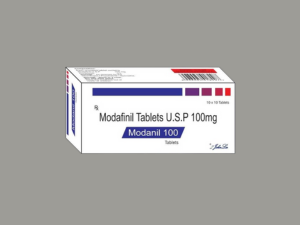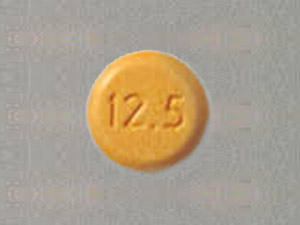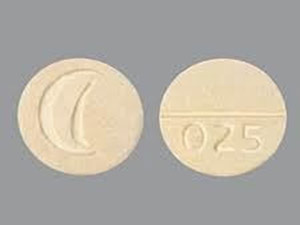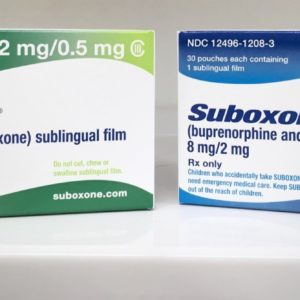Description
What is Modafinil for ADHD?
Modafinil for ADHD is a medication that improves attention and reduces symptoms of hyperactivity.
It is primarily prescribed to promote alertness, but it shows promise for the treatment of ADHD.
Modafinil stimulates brain chemicals linked to alertness and concentration in patients with ADHD.

Unlike traditional stimulants, its effect is longer-lasting and its side effects are reduced.
Doctors prescribe Modafinil off-label to patients looking for alternatives to standard ADHD medications.
How Does Modafinil for ADHD Work?
Modafinil for ADHD works by increasing dopamine and norepinephrine in certain regions of the brain.
These chemicals help regulate attention and reduce impulsivity.
It also affects histamine and orexin, which promote alertness and cognitive clarity.
This medication stimulates brain circuits that regulate focus, alertness, and motivation.
Unlike amphetamines, modafinil causes less nervousness or anxiety while taking it.
This unique action profile makes modafinil an attractive option for many patients with ADHD.
Benefits of this medication for ADHD Symptoms
Using modafinil for ADHD significantly improves attention span, memory, and executive function.
Patients report better control of impulsive behaviors and reduced hyperactivity.
Many users experience more consistent cognitive performance throughout the day.
It also helps reduce mental fatigue without the crashes common with other stimulants.
Modafinil offers a more pleasant experience, with fewer mood swings and sleep disturbances.
These benefits contribute to better daily functioning and a better quality of life.
Modafinil for ADHD vs. Traditional Medications
Compared to amphetamine or methylphenidate, modafinil for ADHD has a lower risk of abuse.
It does not produce the same intense effects or the same risks of addiction.
Its effects last longer, reducing the need for multiple doses per day.
Many patients prefer modafinil because it causes less anxiety and irritability.
It also reduces the risk of appetite suppression, a common side effect of other stimulants.
Modafinil is increasingly popular with adults balancing work and family life.
Side Effects of Modafinil for ADHD
Although modafinil is generally well tolerated, some users experience headaches or nausea.
Insomnia may occur, particularly late in the day or at high doses.
Dizziness or dry mouth may also occur at the beginning of treatment.
Serious side effects are rare but may include allergic reactions or heart problems.
Patients with heart problems or psychiatric disorders should consult a doctor before starting modafinil treatment.
Careful dose adjustment can minimize side effects and improve treatment outcomes.
Modafinil Dosage Recommendations for ADHD
Doctors typically start modafinil treatment at 100 mg once daily and increase it if necessary.
The usual maximum dose rarely exceeds 200 mg per day.
Modafinil is best taken in the morning to avoid sleep disturbances.
Split doses are less common but may be recommended in some cases.
Patients should follow medical advice carefully and not adjust the dose themselves.
Proper use ensures maximum benefit with minimal risks and side effects.
Research on Modafinil for ADHD
Several studies confirm the potential benefits of modafinil for treating ADHD symptoms.
Clinical trials show improvements in attention, working memory, and cognitive flexibility with modafinil use.
Modafinil also helps patients with ADHD who have co-occurring symptoms of anxiety or depression.
The results are promising, but more research is needed to determine their long-term safety.
In the meantime, doctors prescribe modafinil off-label, based on evidence and patient response.
This growing body of research supports modafinil’s role as an alternative treatment for ADHD.
Where to get modafinil for ADHD?
To safely obtain modafinil for ADHD, buy from crakisland.com.
Purchasing modafinil from unverified sources carries the risk of counterfeits and health risks.
Working with physicians ensures proper dosing, monitoring, and integration with other treatments.
Telehealth services also expand access under medical supervision.
Responsible purchasing allows users to obtain authentic modafinil and reduce health risks.
Modafinil uses
Modafinil is currently used to treat excessive daytime sleepiness caused by narcolepsy and sleep apnea.
It helps people stay awake during irregular work schedules, such as shift work sleep disorder.
Doctors prescribe modafinil to improve concentration in people with ADHD symptoms.
Researchers are studying its potential to improve cognitive function and reduce fatigue in patients with multiple sclerosis.
Many users rely on modafinil to improve alertness and maintain productivity in demanding environments.
This medication promotes wakefulness and mental clarity throughout the day.
How modafinil works
Modafinil stimulates the brain’s arousal centers to maintain wakefulness and focus throughout the day.
It increases dopamine levels by blocking its reuptake, improving concentration and motivation.
This medication stimulates the activity of neurons that release orexin, a chemical essential for maintaining alertness and energy.
It also amplifies histamine and norepinephrine signals, which support alertness and cognitive function.
Unlike traditional stimulants, it works without causing significant jitters or rapid heart rate.
It improves brain communication in areas responsible for memory, attention, and decision-making.
Again, it is often prescribed for people with narcolepsy or excessive sleepiness due to shift work or sleep apnea.
By modulating multiple brain systems, modafinil maintains a balanced state of mental clarity and alertness.
Users find it helpful in reducing fatigue while maintaining focus during demanding tasks.
Modafinil side effects
Modafinil causes mild headaches and sometimes nausea in some users during treatment.
Patients often feel nervous or dizzy as their bodies adjust to the medication.
Many people have trouble sleeping, with insomnia becoming common.
The medication causes dry mouth and sometimes stomach upset or diarrhea in some users.
A few patients develop skin rashes, itching, or swelling, which are signs of allergic reactions.
Modafinil also increases heart rate or blood pressure in some cases.
If severe symptoms, such as chest pain or difficulty breathing, occur, seek immediate medical attention.
Generally, most side effects remain mild and disappear with continued treatment.
Is modafinil a controlled substance
Modafinil is a regulated drug in many countries due to its potential for abuse.
Governments classify it as a controlled substance to limit misuse and addiction.
In the United States, authorities classify it as a Schedule IV substance, reflecting moderate control.
This category requires physicians to issue a prescription before patients can legally access it.
Many countries are adopting similar regulations to regulate modafinil distribution and prevent abuse.
Authorities closely monitor its stimulant effects and evaluate its medical benefits.
It is necessary to obtain modafinil with a prescription rather than purchasing it over the counter.
Legislation is evolving as authorities address concerns about recreational use and addiction.
Overall, the legal status of modafinil reflects ongoing efforts to responsibly control its access worldwide.
How long does modafinil last
Modafinil keeps people awake and focused for hours.
The effects begin to be felt about an hour after taking it.
Nevertheless, the body absorbs the drug and reaches its peak after about two to four hours.
Alertness gradually increases as the drug circulates in the bloodstream.
People experience sustained energy and focus that typically lasts 10 to 15 hours.
Everyone’s body processes the drug differently, which explains how long its effects last.
Some users find the effects wear off after 10 hours, while others remain alert for longer.
In general, modafinil maintains alertness longer throughout the day while remaining effective.
Modafinil drug class
Modafinil acts as a wakefulness-promoting agent in the brain.
It increases alertness and reduces fatigue.
This medication acts on certain brain chemicals to maintain wakefulness.
Unlike traditional stimulants, it does not stimulate the central nervous system.
Modafinil works differently by targeting the mechanisms of wakefulness without causing the typical stimulant side effects.
It is classified as an eugeroic agent, meaning it promotes a heightened state of wakefulness.
Researchers recognize the uniqueness of modafinil compared to other currently available psychostimulants.
This medication helps people stay focused and awake for long periods of time.
It is prescribed for conditions such as narcolepsy and shift work sleep disorder.
Modafinil promotes mental clarity and cognitive function and limits excessive sleepiness.
It is attracting growing interest for its unique wakefulness-promoting properties.
Modafinil interactions
Modafinil frequently interacts with several medications, affecting their effects and safety profile.
It affects liver enzymes, including CYP3A4 and CYP2C19, which metabolize multiple medications simultaneously.
This medication reduces the effectiveness of hormonal contraceptives, prompting users to seek additional protection.
It potentiates the effects of certain antidepressants and antipsychotics, increasing the risk of side effects.
Modafinil interacts with blood thinners, such as warfarin, affecting coagulation regulation.
It also reduces the control provided by anticonvulsants, requiring close monitoring.
Combining modafinil with other stimulants or caffeine increases nervousness and heart rate.
Doctors recommend that patients report all medications they are taking to avoid dangerous interactions.
Close monitoring allows for dose adjustments and the maintenance of safe treatment plans.
Modafinil for ADHD and Lifestyle Changes
Combining modafinil for ADHD with a healthy lifestyle increases treatment effectiveness.
Regular physical activity improves brain function and complements the benefits of medication.
A balanced diet rich in omega-3 fatty acids promotes cognitive health.
Mindfulness helps reduce stress and naturally improves concentration.
Adopting routines and good sleep hygiene enhances modafinil’s positive effects on attention.
Together, these strategies provide a holistic approach to ADHD symptoms.
Summary: Modafinil for ADHD offers new hope
Modafinil for ADHD offers an attractive alternative to traditional stimulants.
It improves concentration, reduces hyperactivity, and enhances daily cognitive function.
Patients experience fewer side effects and are better tolerate than other medications.
Although research is ongoing, modafinil is becoming a trusted option for many adults and children with ADHD.
Safe use requires a prescription and medical supervision to ensure optimal results.
Combining modafinil with a healthy lifestyle maximizes benefits and promotes long-term ADHD treatment.
FAQ:
What is Modafinil used for?
Modafinil is used to treat narcolepsy, sleep apnea, and shift work sleep disorder by promoting wakefulness.
How does Modafinil work?
Modafinil works by stimulating the brain’s wakefulness centers, improving concentration, and reducing excessive sleepiness.
How long does Modafinil last?
Modafinil’s effects typically last 10 to 15 hours, depending on the dose and individual metabolism.
What is the recommended dosage of Modafinil?
Most adults take 100 to 200 mg once daily, usually in the morning or one hour before departure.
Does Modafinil have side effects?
Common side effects include headache, nausea, nervousness, and dizziness, which usually disappear over time.
Is modafinil approved by the FDA for ADHD?
Modafinil is not specifically approved by the FDA for ADHD, but it is prescribed off-label.
How long does modafinil take to work for ADHD?
Modafinil generally starts working within 30 to 60 minutes of taking it.
Can modafinil be combined with other ADHD medications?
Combining modafinil with stimulants requires medical advice to avoid side effects.
What happens if I miss a dose?
Take missed doses as soon as possible, but avoid taking them late in the day to avoid insomnia.
Are there any long-term risks of modafinil?
Long-term risks are still being studied, but it is generally safe under a doctor’s supervision.





Samuel Clarisse –
This works exactly as advertised.